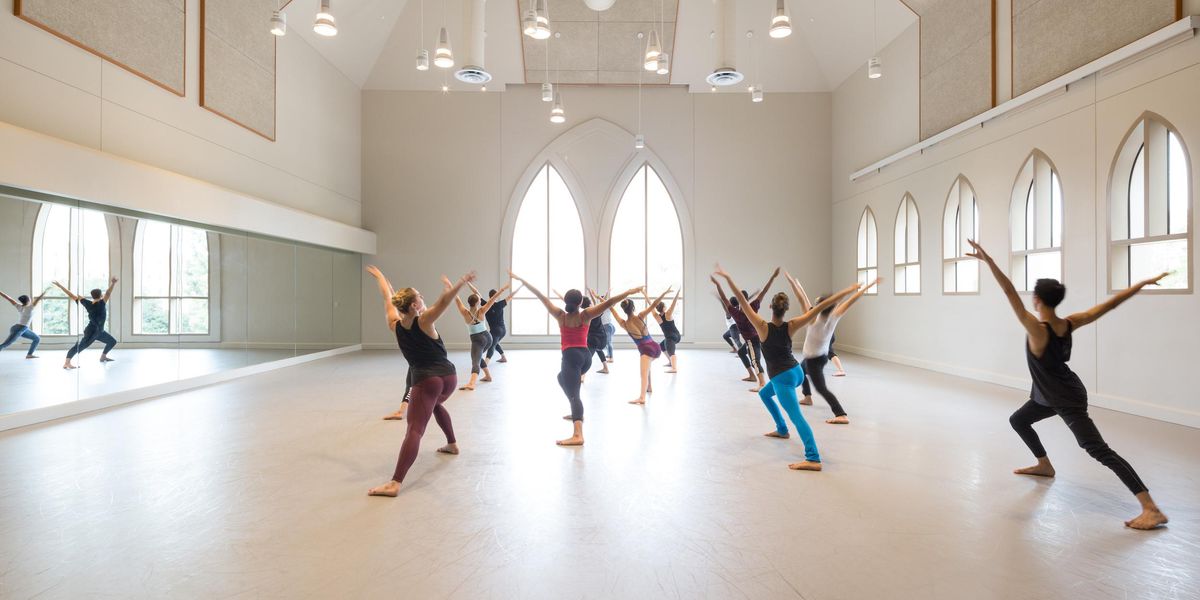Making It Happen: Dancing to Change
U of U students teach at Sara Sotillo Elementary School in Panama City. Photo by Carina Fourmyle, Courtesy Claudio.
Dancers aren’t usually called upon to address poverty, neglect, or basic human needs in developing nations. So Juan Carlos Claudio was surprised and uplifted when he spotted a poster for Movement Exchange, a dance-service organization based in Panama City, on the campus of the University of Utah.
“For the 10 years I danced with Utah’s Ririe-Woodbury Dance Company, one of the things that nourished me most as an artist was the community outreach we did,” says Claudio. Now an assistant professor of modern dance at U of U, he aims to give students a strong technical foundation, “while igniting their passion for dance as a tool for social justice,” he says.
As Claudio would soon learn, his vision of dance as a vehicle for social change was right in line with that of Anna Pasternak, who founded Movement Exchange in 2010. Pasternak, 27, describes her brainchild as “sort of a Dancers Without Borders,” where U.S. dancers—mainly from college dance departments—spend about 10 days teaching, collaborating, and performing with children and local professionals in Panama City. Movement Exchange partners with a number of institutions— including the University of Panama, the U.S. Embassy, the National Dance School of Panama, three orphanages, and three at-risk youth foundations—to provide sustainable dance education for Panamanian youth. “We aren’t one-hit wonders,” Pasternak says, “but rather invest in the communities throughout the year.”
After speaking with Pasternak via Skype, Claudio realized that this was exactly the applied-learning experience he wanted for his students. He began raising money to bring eight of them to Panama City last April.
Pasternak grew up dancing and surfing in California. As an anthropology major at Harvard, she received several fellowships to study in Latin America. After graduation in 2007, her passion for travel and social outreach kept bumping up against her desire to have dance in her life. “Wherever I was in the world—Cuba, Brazil, Mexico—I always connected with the local community by teaching dance,” she says. “Then a few years ago, while working in Panama and volunteering on the side, I asked myself, ‘If I were a university dance student, what would I most want to be available to me?’ ”
Around the same time, at U of U, Claudio was promoting such courses as Dance in Culture, Service Learning: Modern Dance, and a Dance and Community program where students teach under-served populations. “There is a large Hispanic dance community here in Utah,” says Claudio, who grew up in Puerto Rico. “But the populations we work with aren’t just racially diverse. We work with refugees, at-risk youth, the homeless, and veterans. We deal with issues like obesity, emotional stress, and PTSD.” Those varied experiences prepared his students for Movement Exchange. “They came with an openness because they had been working throughout the year on service projects,” says Pasternak. “I was impressed by the connection and community they built in such a short time.”
With only a week in Panama, the U of U volunteers hit the ground running, putting in 12-hour days and working with about 100 students per day. They taught at two orphanages, a public elementary school, the university, and the National Dance School, in addition to taking class with local artists. Unexpected challenges called for patience and flexibility. “When we first got to the orphanages, we found that there was no music available,” says MFA student Lynn Bobzin. “So we created our own by drumming on the floor and singing.”
Before the trip, Bobzin had been questioning her decision to pursue a career in dance. “Through Juan’s Dance and Community class, I knew I wanted to teach and dance outside the U.S. But the trip opened my eyes to something larger, something bigger than myself.”
Bobzin is excited to return to Panama in the spring. In order to fund the trip, this year’s 16 selected participants have formed the International Dance Exchange Club and are learning to write their own grant applications.
Pasternak notes that children in orphanages often have many social and psychological hurdles to overcome. “They can have a hard time even facing each other and talking,” she explains. But with Movement Exchange, “they gain self-confidence, pride, and trust. They learn teamwork and organizational skills. Kids don’t necessarily want to talk about the things they’ve been through, so they get to explore and express some of their feelings through dance.”




